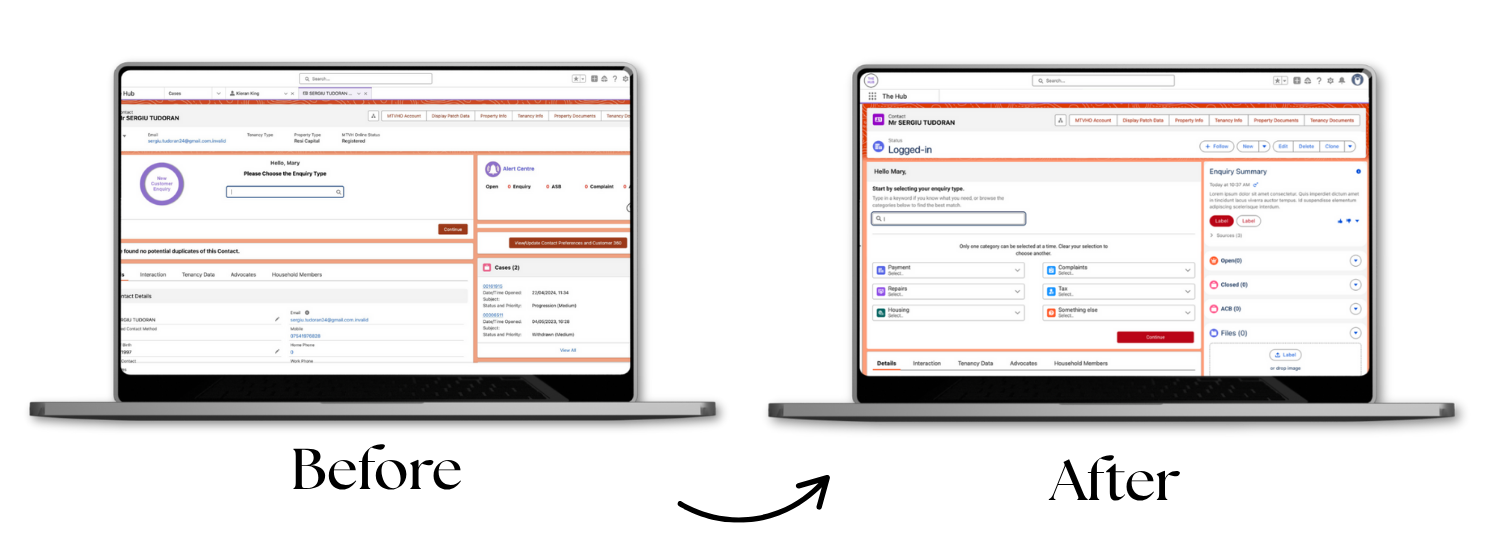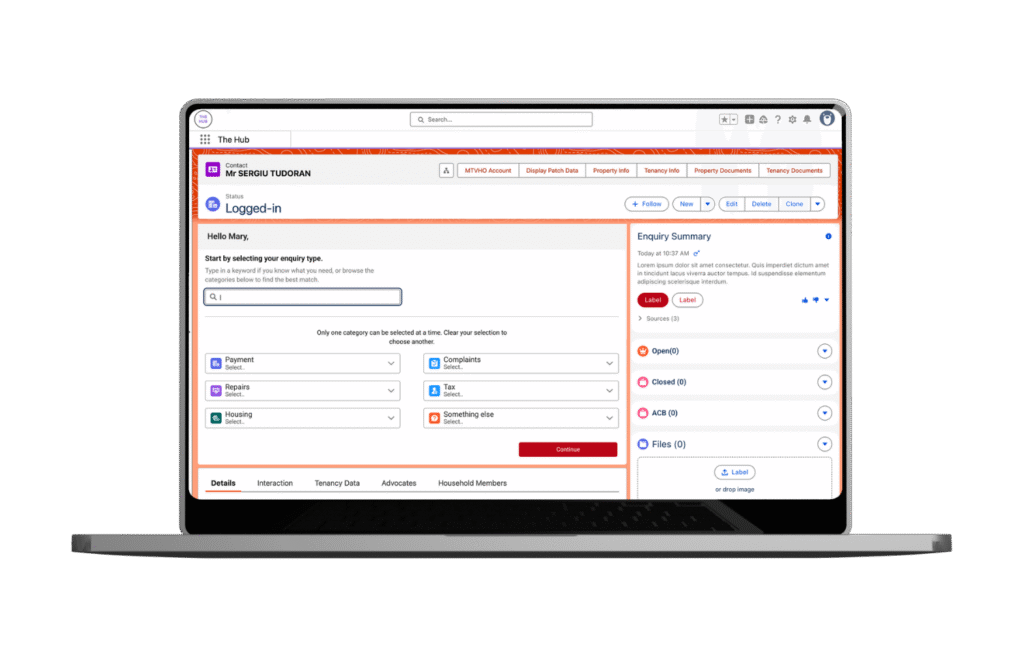Sole UX Designer responsible for the end-to-end design process, from user research and workshops to wireframing, prototyping, and usability testing.
3 Months
Figma, Miro, Confluence, Jira
Redesign Enquiry Type Case Management Tool to reduce complexity for staff by simplifying enquiry choices, while improving the accuracy of data captured in Salesforce to enhance service delivery and reporting
The system contained 188 enquiry types, which was overwhelming and unclear for staff.
60% of cases were logged under the “General” category, leading to inaccurate reporting and poor data integrity.
Poor case management handling caused inconsistencies in how enquiries were tracked and resolved.
Locating the correct enquiry type in Salesforce was slow and inefficient, adding friction to staff workflows.
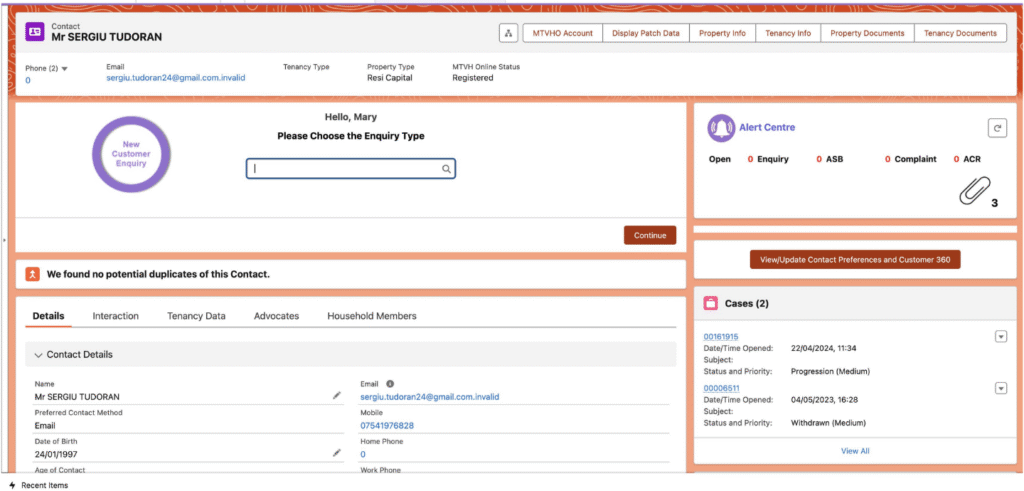
Goals were grouped into three key areas to ensure both efficiency in daily workflows and reliability in data for strategic decision-making.
Consolidate and remove unnecessary enquiry types. Redesign webforms to be intuitive and user-friendly.
Improve Salesforce CRM usability to reduce time and errors in case handling. Streamline the process of locating and selecting enquiry types.
Ensure enquiry types are accurately mapped to Salesforce. Enhance reporting to help managers track and identify trends.
To understand why staff were struggling to select the right enquiry types in Salesforce,I conducted two types of research to understand the issue:

Based on data analysis and user insights, I drafted UX recommendations that included removing unused enquiry types, improving layout and search, and introducing clear categorisation.
I presented these to the Product Manager and Head of Digital, gaining buy-in to move forward into the ideation phase.
Using Miro, I conducted an open card sorting exercise with five users , including frontline agents and managers, to understand how staff naturally grouped enquiry types. Each user was assigned a board with 188 enquiry types and the flexibility to create groups based on their options.�

To validate and inspire best practices, I also conducted a landscape analysis of companies like Tesco, Argos, and Amazon to study how these organisations structure and surface support enquiries or help topics.
I also documented UX best practices around enquiry selection, data capture, and case handover.
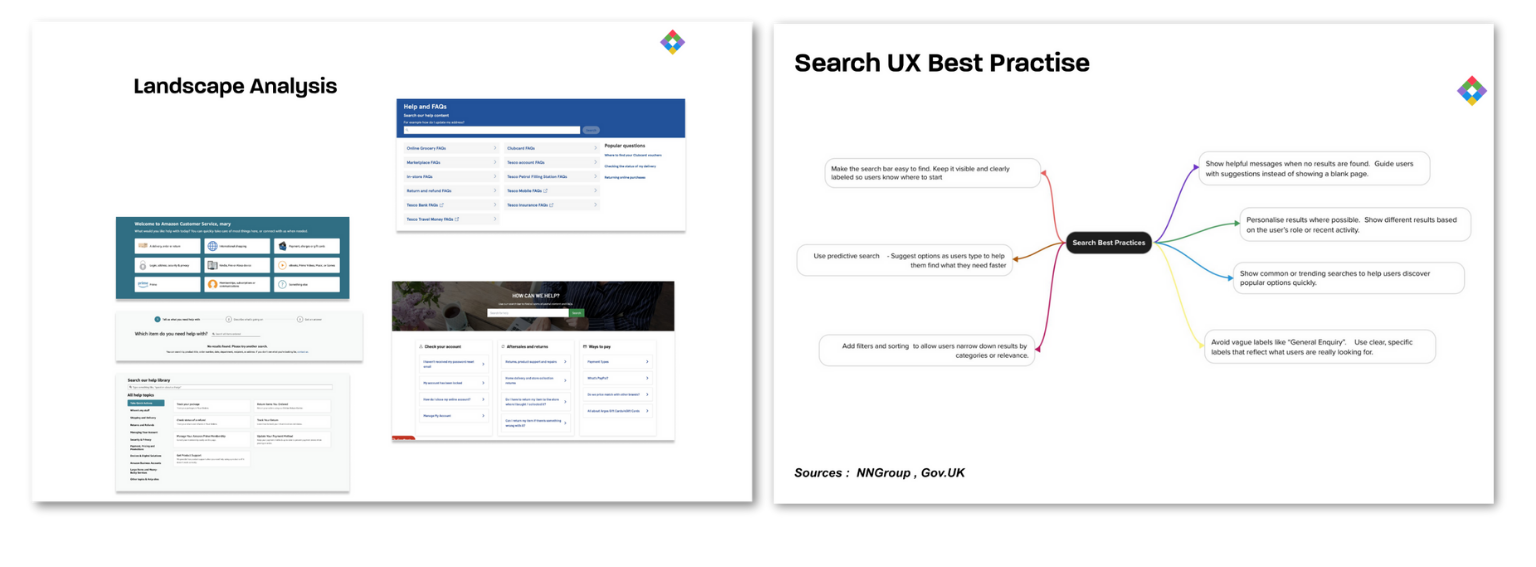
Using findings from the card sort, best practices and landscape analysis, I mapped out userflows and sketched low-fidelity concepts to rethink how users select enquiry types in the CRM.�
I presented my design concept in a stakeholder workshop and facilitated a collaborative ideation workshop in Miro to ascertain technical feasibility, co-generate new ideas and prioritise features based on feasibility and impact.
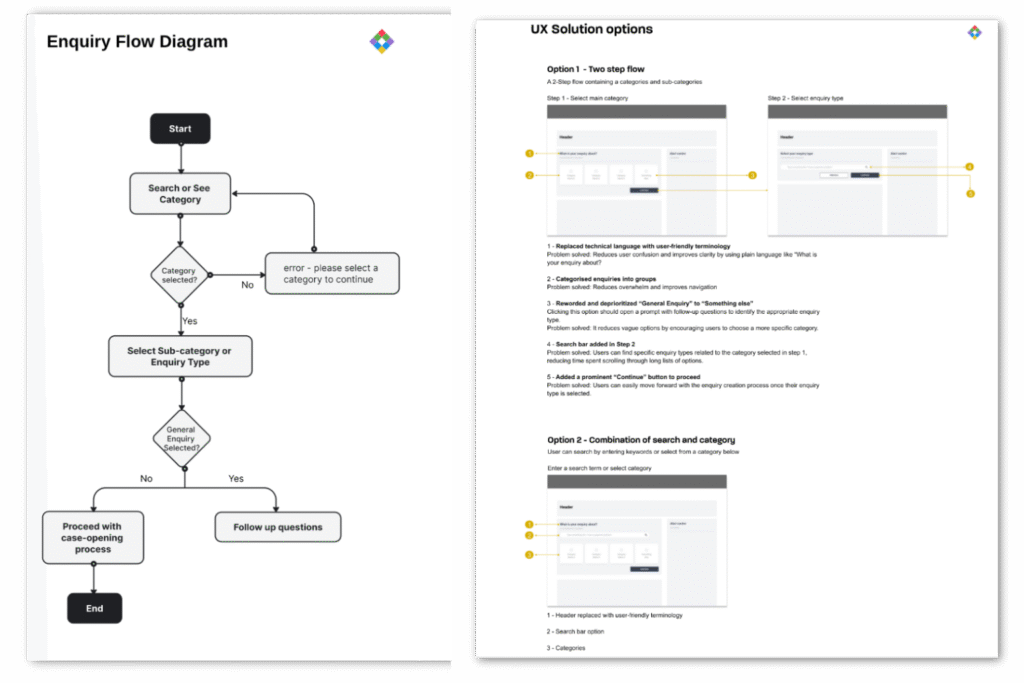
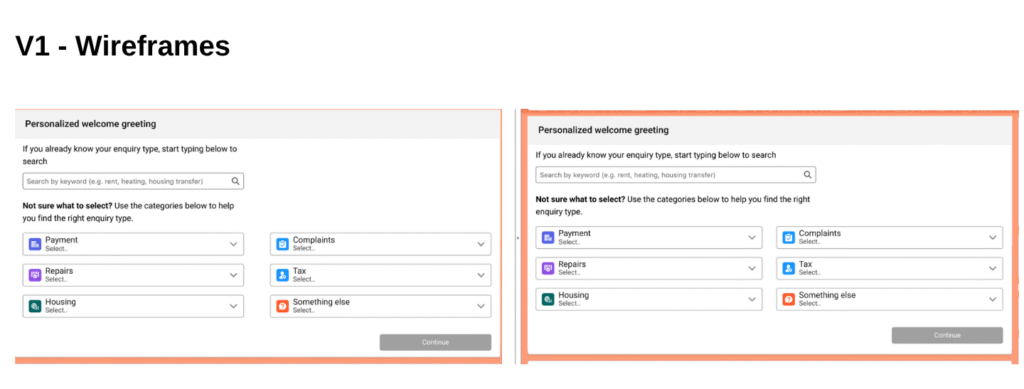
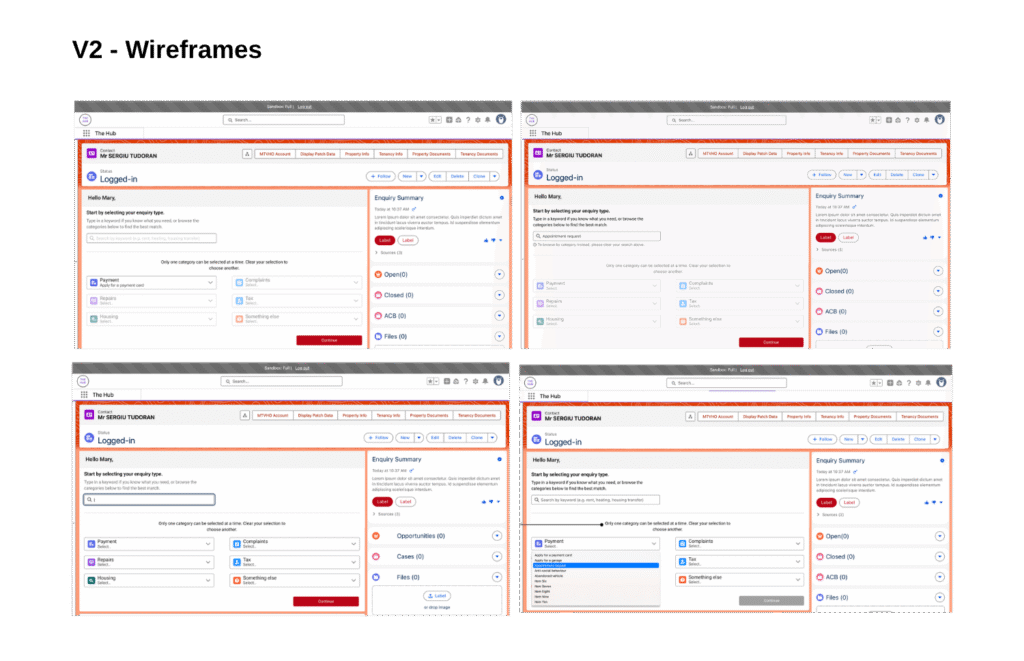
Tested designs with agents who confirmed the new structure was clearer but highlighted that the two-step model added time. Adjustments were made to balance simplicity and speed and re-tested.
